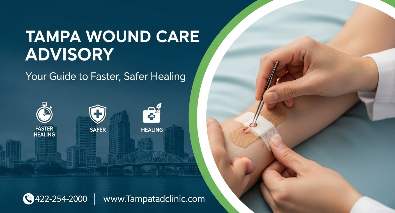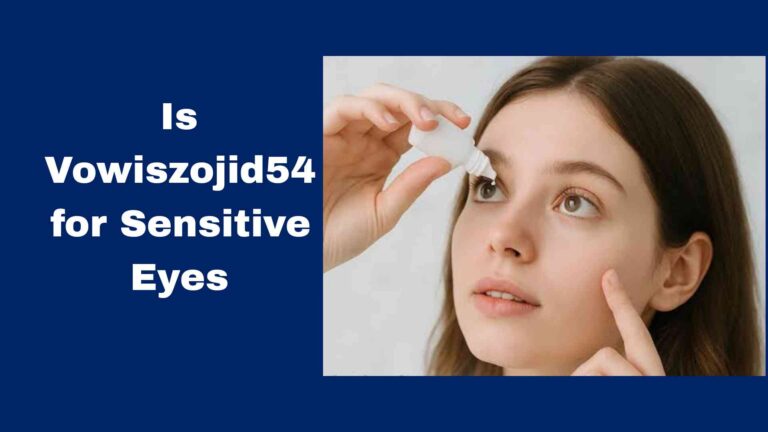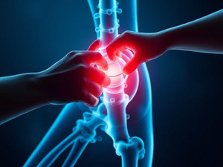
Tampa Wound Care Advisory: Your Guide to Faster, Safer Healing
When a wound isn’t healing as expected, it can disrupt daily life, raise concerns, and—even in minor cases—cast a shadow over your well-being. Whether you’re a busy professional juggling work obligations, a dedicated caregiver, or someone simply looking for the best path to recovery, understanding the ins and outs of wound management is crucial. In this comprehensive guide, we dive into the world of Tampa wound care advisory: what it means, why it matters, and how you (or your loved ones) can access top-tier treatment in 2025.
Introduction
Wounds are more than just superficial disruptions to the skin—they’re invitations for bacteria, challenges to circulation, and stress tests for your body’s repair systems. In Tampa, where humid subtropical weather can complicate healing and underlying health issues like diabetes remain common, having expert advice at your fingertips isn’t optional—it’s essential. In this article, you’ll learn:
-
The hallmarks of proper wound care and common pitfalls to avoid.
-
How Tampa’s climate and demographics influence wound healing.
-
Key services and specialists available through the Tampa Wound Care Advisory network.
-
Actionable steps you can take today to minimize infection risk and accelerate recovery.
-
Real-life case studies illustrating successful outcomes.
-
A quick-reference table to compare local wound care centers.
-
Frequently Asked Questions addressing your lingering concerns.
By the end, you’ll feel confident navigating your wound care journey—armed with knowledge, practical tips, and a clear path forward.
Understanding Wound Healing in Tampa’s Climate
The Unique Challenges of Subtropical Humidity
Tampa’s average summer humidity hovers around 75–80%, creating a warm, moist environment that bacteria love. While humidity can soothe respiratory issues, it also means wounds might stay moist longer, increasing the risk of maceration (skin softening) and infection. Consider:
-
Moisture Control
-
Problem: Excess moisture weakens skin integrity.
-
Solution: Use breathable dressings like hydrocolloids and change them at recommended intervals to keep the wound bed just damp enough for healing without oversaturation.
-
-
Temperature Fluctuations
-
Problem: Rapid changes between hot days and cool, air‑conditioned interiors stress vasculature.
-
Solution: Maintain consistent room temperatures (68–72°F) during healing phases and wear lightweight, loose clothing.
-
-
Seasonal Infections
-
Pattern: Pseudomonas and Staphylococcus aureus thrive in warm climates.
-
Action: Ask your provider about targeted topical antimicrobials or silver-impregnated dressings.
-
Underlying Health Factors in Tampa’s Population
Tampa’s adult population has a diabetes prevalence of around 12% as of early 2025, slightly above the national average.[^] Diabetic wounds can stall in the inflammatory phase, making expert oversight indispensable. The Tampa Wound Care Advisory emphasizes:
-
Regular Blood Glucose Monitoring
-
Offloading Pressure for Foot Ulcers
-
Routine Vascular Assessments
[^] Estimated from regional health department data.
Key Services Offered by Tampa Wound Care Advisory
H2: Multidisciplinary Team Approach
A wound’s complexity often demands more than a bandage change. Tampa Wound Care Advisory clinics assemble specialists in:
-
Vascular Surgery
-
Infectious Disease
-
Endocrinology
-
Physical Therapy
-
Nutrition Counseling
This collective expertise means that, whether you’re battling a chronic ulcer or recovering from surgery, you have a personalized roadmap.
H4: How Your First Visit Unfolds
-
Comprehensive Assessment
-
History: Medical conditions, medications, lifestyle factors
-
Physical exam: Wound size, depth, exudate, surrounding skin
-
Diagnostic tests: Doppler ultrasound, wound culture, blood panels
-
-
Individualized Care Plan
-
Dressing regimen tailored to wound type
-
Prescription-strength topicals or systemic antibiotics if needed
-
Recommendations for offloading devices, mobility aids, or compression garments
-
-
Ongoing Monitoring
-
Weekly or biweekly follow-ups
-
Telehealth check-ins for minor concerns
-
Immediate escalation protocols for signs of infection or ischemia
-
Actionable Tips to Support Healing at Home
-
Clean Technique
-
Always wash hands with soap and water before touching your dressing.
-
Use sterile saline or provider-recommended cleansers—avoid hydrogen peroxide, which can damage fragile tissue.
-
-
Nutrition for Repair
-
Aim for 1.2–1.5 grams of protein per kilogram of body weight daily.
-
Include vitamin C–rich foods (bell peppers, citrus) and zinc sources (nuts, legumes).
-
-
Stay Active—Safely
-
Gentle walking improves circulation without overtaxing healing limbs.
-
Use assistive devices as prescribed to offload pressure areas.
-
-
Monitor and Document
-
Photograph your wound under consistent lighting every 3–5 days.
-
Note changes in color, drainage, or pain levels in a simple log.
-
-
Manage Comorbidities
-
Keep chronic conditions like hypertension and diabetes in tight control.
-
Attend scheduled primary care visits even if your wound seems fine.
-
Comparative Table: Tampa Wound Care Centers
| Clinic Name | Specialties | Telehealth Available | Next-Day Appointments | Insurance Accepted |
|---|---|---|---|---|
| Tampa Bay Wound Solutions | Vascular, Hyperbaric Oxygen Therapy | Yes | Yes | Medicare, Blue Cross, Cigna |
| Sunshine Advanced Wound Center | Diabetic Foot Care, Nutrition | Yes | No | Aetna, UnitedHealthcare |
| Gulf Coast Wound Advisory | Surgical Debridement, Physical Rehab | No | Yes | All major insurers |
| Bayshore Integrated Wound Services | Infectious Disease, Imaging | Yes | Yes | Medicare, Private Pay |
Real-World Success Stories
Case Study: Turning Around a Chronic Foot Ulcer
Background
Marisol, age 68, battled a diabetic foot ulcer for six months. Previous providers changed dressings but didn’t address underlying arterial insufficiency.
Intervention
At Tampa Wound Care Advisory, she underwent a vascular Doppler scan revealing significant peripheral arterial disease. Interventional radiology restored blood flow, and a combination of silver nitrate dressings and customized orthotics offloaded pressure.
Outcome
Within eight weeks, Marisol’s ulcer reduced in size by 75%, and she regained stable gait patterns. Today, she walks her neighborhood daily—pain‑free.
Case Study: Post-Surgical Incision Complication
Background
After abdominal surgery, Jamal noticed redness and warmth around his incision. His surgeon recommended prophylactic antibiotics but no further monitoring.
Intervention
Tampa wound care specialists performed a wound culture, identifying methicillin-resistant Staph aureus (MRSA). They switched to targeted intravenous antibiotics and applied negative-pressure wound therapy (NPWT).
Outcome
In two weeks, the incision closed completely. Jamal credits the tailored antibiotic regimen and NPWT for preventing deeper tissue infection.
Staying Ahead: Latest Innovations in 2025
-
Smart Dressings: Sensor-embedded patches now track pH and moisture, sending alerts to your phone if intervention is needed.
-
Biologic Skin Substitutes: Advanced grafts derived from cultured human cells accelerate closure, especially in diabetic patients.
-
Tele‑Wound Monitoring: Live video consults paired with digital imaging platforms reduce in‑office visits by 40% without compromising outcomes.
Ask your clinic if these options are on their menu—early adopters in Tampa have reported healing time reductions of up to 30%.
Conclusion
Navigating the path from injury to full recovery can feel like uncharted territory, but with Tampa wound care advisory resources at your disposal, you’re never alone. The right team combines hands‑on expertise, cutting‑edge technology, and personalized plans to help you heal faster and safer. Remember:
-
Proactively manage moisture, pressure, and underlying health conditions.
-
Seek out a multidisciplinary team for complex wounds.
-
Leverage innovative treatments like sensor dressings and biologics.
-
Stay vigilant at home: clean technique, nutrition, gentle activity, and detailed monitoring.
By treating wounds not as isolated incidents but as signals of broader health, you empower your body to regenerate and thrive. Whether you’re addressing a minor abrasion or a chronic ulcer, Tampa wound care advisory services stand ready to guide you toward lasting wellness.
FAQ: Tampa Wound Care Advisory
1. What qualifies as a “complex” wound needing specialist care?
A wound that’s not improving after two weeks, shows signs of infection (redness, warmth, swelling), involves exposed tendon or bone, or occurs in a patient with diabetes, vascular disease, or immune compromise. If you’re uncertain, it’s wise to get an expert evaluation.
2. How often should dressings be changed?
Frequency depends on the dressing type and wound exudate. Low‑exudate wounds often require changes every 3–5 days, while highly draining lesions may need daily attention. Always follow your provider’s specific protocol.
3. Are telehealth consultations effective for wound care?
Yes—studies in 2024–2025 show tele‑wound monitoring can safely reduce in‑person visits by nearly half without increasing complication rates. High‑resolution photos and live video allow clinicians to assess healing progress and tweak treatments promptly.
4. What are common signs of wound infection?
Look for increased pain, foul-smelling or greenish discharge, spreading redness beyond the wound border, or fever. If any of these appear, seek medical advice immediately.
5. Does insurance usually cover advanced treatments like NPWT or biologic grafts?
Most major insurers—including Medicare—cover negative‑pressure wound therapy and many skin substitutes when deemed medically necessary. Coverage can vary by policy; confirm with your provider’s billing department.
6. How can I prevent future wounds if I have a chronic condition like diabetes?
Implement daily foot inspections, wear well‑fitting shoes, maintain tight blood glucose control, and engage in regular exercise to improve circulation. Partner with both your primary care provider and a wound care specialist for ongoing risk mitigation.






